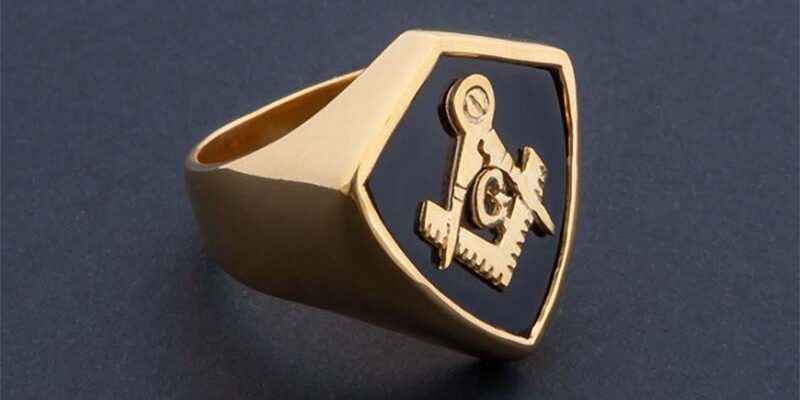The Freemasons, an ancient and secretive fraternal organization, have a rich history dating back centuries. The Freemason ring, a symbol of the fraternity and its values, has undergone a fascinating evolution in design over the years. This overview explores the historical progression of Masonic ring designs, reflecting changes in symbolism, craftsmanship, and the societal contexts in which they emerged.
Early Symbolism:
The earliest Masonic rings were often simple, with basic symbols such as the square and compass prominently featured. These symbols represented the foundational principles of Freemasonry, emphasizing moral and ethical conduct. The rings were crafted with precision but tended to be modest in design, reflecting the discreet nature of Masonic symbolism during times when the fraternity faced persecution.
Emblematic Changes in the 18th Century:
During the 18th century, Freemasonry experienced a surge in popularity and acceptance. This period saw an expansion in the symbolism incorporated into Masonic rings. Additional emblems, such as the All-Seeing Eye, pillars, and the square and compass with the letter “G” in the center, became common features. Rings also began to include intricate engravings, showcasing the craftsmanship of the artisans.
Victorian Era Elegance:
In the Victorian era, Masonic rings evolved to reflect the prevailing aesthetics of the time. Rings became more ornate, featuring detailed engravings, gemstones, and filigree work. The designs began to incorporate a broader range of symbols, including pillars, columns, and architectural elements, echoing the fraternity’s connections to ancient stonemasonry.
20th Century Modernization:
In the 20th century, Masonic ring designs underwent a modernization influenced by changing artistic trends. Rings became sleeker and more streamlined, with a focus on simplicity and symbolism. Traditional symbols like the square and compass remained central, but the overall design became more adaptable to contemporary tastes.
Customization and Personalization:
In recent times, Masonic rings have embraced customization. Freemasons often personalize their rings with unique symbols, initials, or dates significant to their Masonic journey. This trend reflects a shift toward individual expression while maintaining the core symbolism of the fraternity.
Technological Advancements:
With technological advancements, the production of Masonic rings has seen innovations such as 3D printing and laser engraving. These techniques allow for intricate detailing and precision in crafting, providing Masons with a wider array of design options.
Contemporary Minimalism:
In the 21st century, there has been a resurgence of interest in minimalist design. Some Masonic rings now feature clean lines and subtle symbolism, catering to those who prefer a more understated yet meaningful representation of their Masonic affiliation.
Conclusion:
The historical evolution of Masonic ring designs reflects not only changes in artistic preferences but also the dynamic nature of Freemasonry itself. From modest symbols in times of secrecy to the ornate elegance of the Victorian era and the modern embrace of personalization, Freemason ring continue to serve as timeless artifacts that encapsulate the rich history and enduring principles of the Freemasons.


